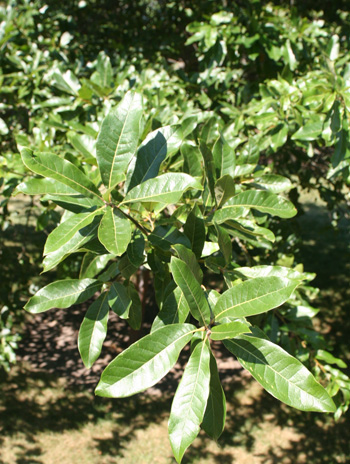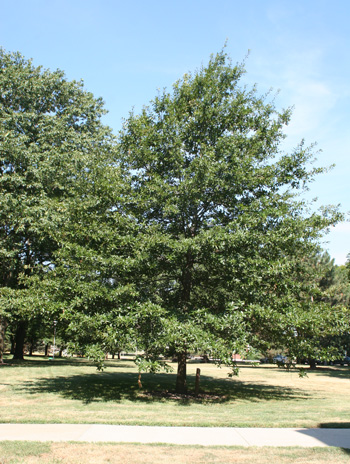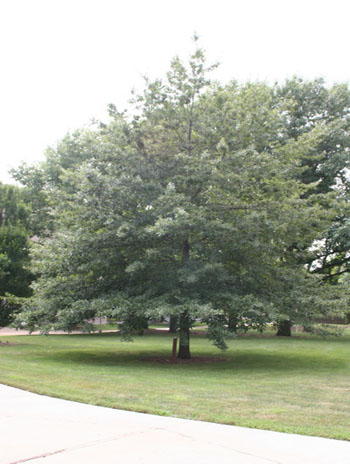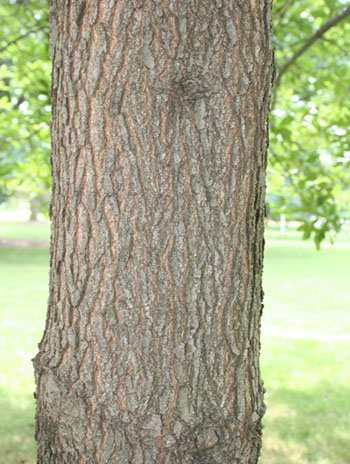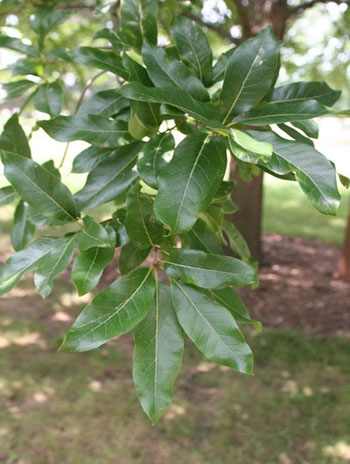GIS Coordinate:
N40 21.244 W94 53.139
Trail Number:
C18
Family:
Fagaceae
Foliage:
Leaves simple, alternate, oblong, 2.5 to 6 inches long; dark green in summer, turning russet-red in the fall
Native Locale:
Pennsylvania to Georgia, west to Nebraska and Arkansas
Mature Height:
50 to 60 feet; can grow 80 to 100
Mature Width:
Equal or greater than height
Hardiness Zones:
Zone 4 to 8
Soil Preference:
Prefers moist, rich, deep, well-drained, acid soil; tolerant of drier soils
Growth Habit:
Pyramidal to upright-oval in youth assuming a haystack-shaped to broad-rounded outline in old age, often with drooping, lower, lateral branches
Rate of Growth:
Slow to Medium, 1 to 1 1/2' per year over a 10 to 20 year period
Disease and Insect:
Anthracnose, basal canker, canker, leaf blister, leaf spots, powdery mildew, rust, twig blights, wilt, wood decay, shoe-string root rot, various galls, scales, gypsy moth, yellow-necked caterpillar, pin oak sawfly, saddleback caterpillar, oak skeletonizer, asiatic oak weevil, two- lined chestnut borer, flatheaded borer, leaf miner, oak lace bug and oak mite
Landscape Value:
n/a
Additional Notes:
